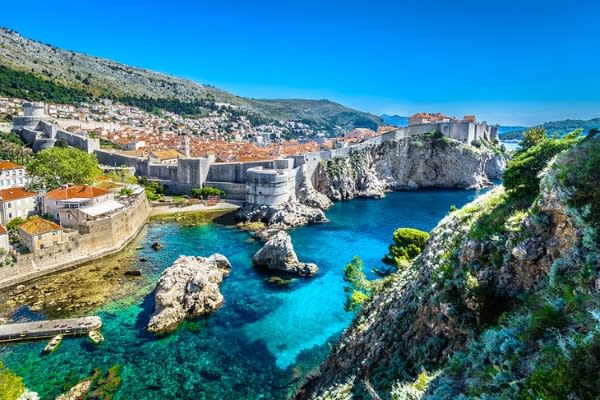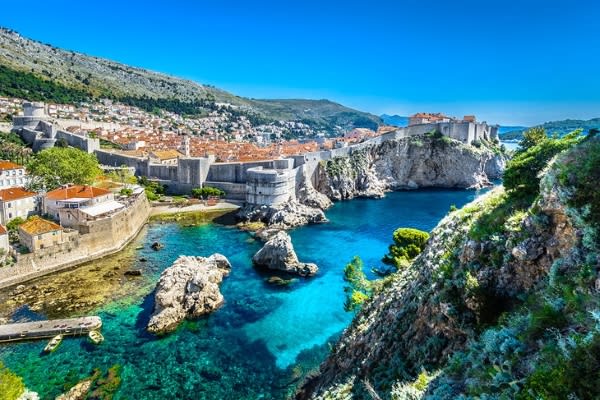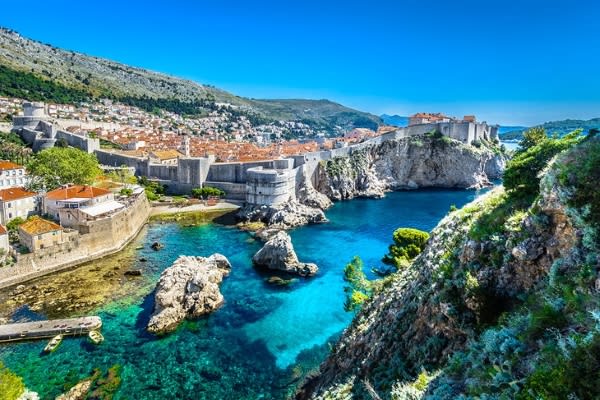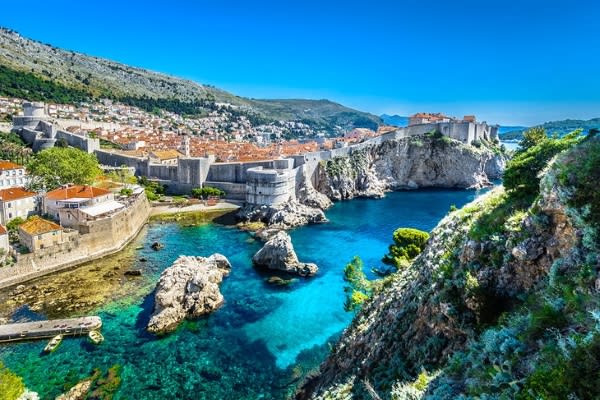Croatia
Overview and productions
Croatia has been part of the Schengen Agreement since January 2023, with the country adopting the euro as its currency. The film sector is expected to benefit as a result, as the territory comes into line with most of Europe. One obvious lure is the tax rebate programme, worth 25% of eligible spend, and there is an additional 5% available for filming in regions with below-average development.
But productions have also been drawn to the beautiful Adriatic locations and mix of architectural styles, ranging from Roman to medieval, baroque to modern. Moreover, Croatia is also known for doubling other locations, with capital Zagreb used to recreate Prague, Paris, Budapest and Vienna. Many productions based in Budapest, Prague or London come for location shooting.
The country does not yet have a big studio, however there are some compact facilities. CineCro Studio opened recently with two smaller soundstages.
“I always say the crews and local production companies are the most important [attractions]. They are the pillars of everything,” says Tanja Ladovic Blazevic, head of Filming In Croatia.
Filmmaking tends to slow in high summer because of the heat and tourist season, but 2023 was busy. High-profile projects scheduled for early autumn included a series version of Frederick Forsyth’s The Day Of The Jackal from Peacock and Sky Studios (Croatian service producer is Embassy Films). German drama Mumiya is also set to shoot, with local service producer Pakt Media.
Czech holidaymakers have long flocked to Croatia and the territory’s filmmakers are beginning to follow. New Czech series Hotel (working title) shot in October. Meanwhile, Dutch outfit Lemming will be back with David Verbeek’s feature The Wolf, The Fox & The Leopard.
In 2023, Finnish series Ride Out filmed around Zagreb, while Italian feature Napoli New York was based in Rijeka. Constantin Television returned to Dalmatia with Split Homicide parts 15 and 16, while Hotel Portofino was back for its third season. Other projects included Kate Winslet starrer Lee and season three of Netflix’s Vikings: Valhalla.
While Croatia’s incentive is less than the 40% offered by nearby Greece, international producers know it will be paid promptly and it is a safe place to visit. There has also been increasing collaboration between Croatia and its neighbours. Brandon Cronenberg’s feature Infinity Pool was put together as a Canada-Hungary-Croatia co-production and received support through the cash rebate and the state fund for minority co-production (awarded on a selective basis).
First person to contact: Tanja Ladovic Blazevic, head, Filming In Croatia: filmingincroatia@havc.hr

Gallery
Locations and permits
Shooting at these locations can be straightforward, say producers, but requires the assistance of local production contacts. “[For The Hitman’s Wife’s Bodyguard], we closed traffic on a bridge and in various towns for action and stunt driving scenes,” says Igor A Nola of local outfit MP Film, which gave production service support to The Hitman’s Wife’s Bodyguard and McMafia. “We also closed a state road for five consecutive working days, two weeks in a row. We got huge support from local road authorities, police and community.”
Shooting in the summer, particularly in the coastal towns, can be difficult because of tourists, so most productions tend to visit between October and May. Preparation is key. Depending on the location, it is advisable to talk to local authorities, or even government officials, well in advance. For some nationalities, both shooting and work permits are required, as well as visas. Hiring the services of a local co-ordinator is recommended.
“Croatia offers a very high diversity of locations within a geographically compact area, says Blue Sky Adriatic's Magdic. “The region is also blessed with two different types of climate (mild Mediterranean on the coast and Continental inland) also within a short distance of each other, which in turn provides the region with a variety of looks.“
Light Film International's Igor Mijoljević says Croatia is a “production-friendly country that offers various types of locations in one place — from breathtaking natural spots to historical towns.“
“The country has always been at the crossroads of East and West, a meeting point of different cultures, peoples and experiences. The capital Zagreb is a modern city with central European feel and the old town from the Habsburg era, while towns such as Dubrovnik, Split, Trogir, Šibenik, Zadar and Pula offer well-preserved Roman and Renaissance architecture. Besides that, the country is peppered with grand castles, stone towns and fortresses with impressive stories that are truly a creative mind's dream.
“That historical side of the country is its main strength as a place of production, but Croatia is much more than that. It also offers super modern architecture, advanced communication infrastructure, forward-looking green projects and technological solutions, smart offices and homes, numerous modern villas blended into nature, a new and functional highways network to swiftly get around,“ Mijoljević adds.

Infrastructure and crew
There has been some pressure on crews, with so much production going on. In the short term, local production companies have put together crews for all projects currently scheduled to shoot. Leading local production companies with successful projects within the incentive programme include 4Film, Antitalent, Blue Sky Adriatic, Embassy Films, Drugi plan, MP Film Production and PAKT Media.

Travel and logistics
Croatia has excellent transport links thanks to its highly developed tourism industry. Zagreb is the centre of the film business, while Dubrovnik is only an hour by plane. It takes an hour or so in a car to get from Zagreb to the coast.
Croatia can be divided into three geographically distinct zones: coastal, highland and the Pannonian region, connected by modern highways, which shorten the travel times.
Zagreb Airport is the centre of air traffic, while smaller facilities on the coast (Dubrovnik, Split, Zadar, Pula, Rijeka) bring many passengers to Croatia, most of them tourists.

Size matters
Croatia is a small yet diverse country situated at the crossroads of Central Europe, the Balkans and the Mediterranean. It extends over 56,600 square kilometres, bordering Slovenia and Hungary in the north, Serbia in the east, and Bosnia & Herzegovina and Montenegro in the south. Croatia also has a long maritime border with Italy in the Adriatic Sea as well as 6,300km of coastline and 1,244 islands.

Sign up for newsletter
Newsletter